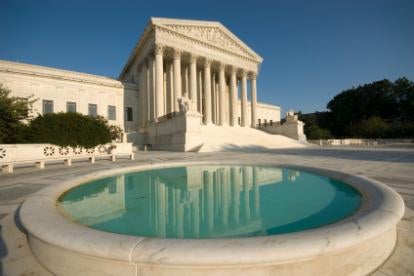In our earlier segment, we examined some of the repercussions of the current vacancy on the Supreme Court. This week we will examine in more detail the specific impact on the Fifth Circuit and how the vacancy impacts splits in decisions between the 11 circuits of the United States Courts of Appeals. The National Law Review turned to the expertise of Andrew Pincus of Mayer Brown, Daniel Volchok of Wilmer Hale and Tejinder Singh of Goldstein & Russell, P.C. for help fleshing out these issues.
What happens to Fifth Circuit filings and other Emergency Injunctions?
A Supreme Court Justice is assigned to each of the 11 federal districts or circuit courts. Daniel Volchok explains, “Many stay applications, extension requests, and other such filings, whether done on an emergency basis or not, are handled by the single Justice responsible for the circuit from which the request arises.” Which Justice gets which circuit is assigned through a court order, and a 2010 order gave Scalia stewardship over the Fifth Circuit, which includes the Federal District and Federal Appellate Courts for Louisiana, Mississippi and Texas.
Since these filings are dealt with, for the most part, by the Justice in charge of each circuit, the Fifth Circuit was the most significantly impacted by the Scalia vacancy. Supreme Court rule 22.3 states, “When the Circuit Justice is unavailable for any reason, the application addressed to that Justice will be distributed to the Justice then available who is next junior to the Circuit Justice; the turn of the Chief Justice follows that of the most junior Justice.” In this instance, the Justice who would handle the Fifth Circuit’s procedural matters in Scalia’s absence would be Justice Kennedy. However, on Thursday, February 25th the Supreme Court issued a formal order reassigning the Fifth Circuit to Justice Thomas.
Tejinder Singh commented that:
Justice Scalia was the only Justice on the Court who routinely denied applications for an extension of time for parties seeking certiorari. Justice Thomas, however, grants extensions more regularly. Now that Justice Thomas oversees applications from the Fifth Circuit, it will probably be a little bit easier for petitioners coming from there to get extensions.
Significant requests, like death row inmates requesting stays of execution, are referred to the full Supreme Court, and will face the same situation with Scalia’s vacancy as cases argued or pending before the Court. Andrew Pincus says, “Five votes are still required for the Court to issue an emergency order or render any other decision (other than four votes to grant certiorari) and the possibility of 4-4 division is therefore present in these situations as well.” Singh says:
[A] five-Justice majority is required to get an emergency injunction or stay. Often, such orders are sought in capital cases by inmates facing imminent execution. Justice Scalia wasn’t typically inclined to grant inmate applications anyway, so I doubt there will be much change on that front. On the other hand, there have been some 5-4 interim orders where Justice Scalia’s vote made a difference, e.g., in the contraception mandate cases.
What Happens to Circuit Splits?
Rule 10 of the Supreme Court indicates that a writ of certiorari is granted by the Court, and the Court can decide which cases to hear; it is the Court’s discretion. The rule does give some situations that indicate when the Court’s expertise is necessary, and one of those reasons is if “a United States court of appeals has entered a decision in conflict with the decision of another United States court of appeals on the same important matter; has decided an important federal question in a way that conflicts with a decision by a state court of last resort.”
In the past, Chief Justice John Roberts has indicated that the presence of a circuit split is a major consideration in deciding whether or not the Court will hear a case. But what happens when the Supreme Court is unable to resolve those splits? According to Volchok, a tie in these situations means:
a federal law (a statute, rule, or regulation, for example, or perhaps even a provision of the Constitution), has a different meaning in different parts of the country. Avoiding that kind of disuniformity is a key job of the Supreme Court.
According to Pincus, “the lower courts will continue to decide cases, but they will not have any guidance from the Supreme Court and will have to resolve the legal issues as best they can.”
The current vacancy is starting to have a real impact. On March 22nd, in Hawkins v. Community Bank of Raymore, the Supreme Court was unable to resolve a split between the Sixth and Eighth Circuits. The case, which deals with spouses serving as guarantors for bank loans and the US Equal Credit Opportunity Act, (ECOA) resulted in a 4-4 tie. The Court issued a simple statement that said, “The judgment is affirmed by an equally divided Court.” So the March 22nd decision failed to answer the underlying questions regarding the ECOA and the Hawkins affirmation from the Supreme Court does not carry any precedential value. So as described by Pincus, “conflicts among the lower courts remain in place, and parties’ rights would depend on where a suit was brought – precisely what the Supreme Court is supposed to prevent.”



 i
i


